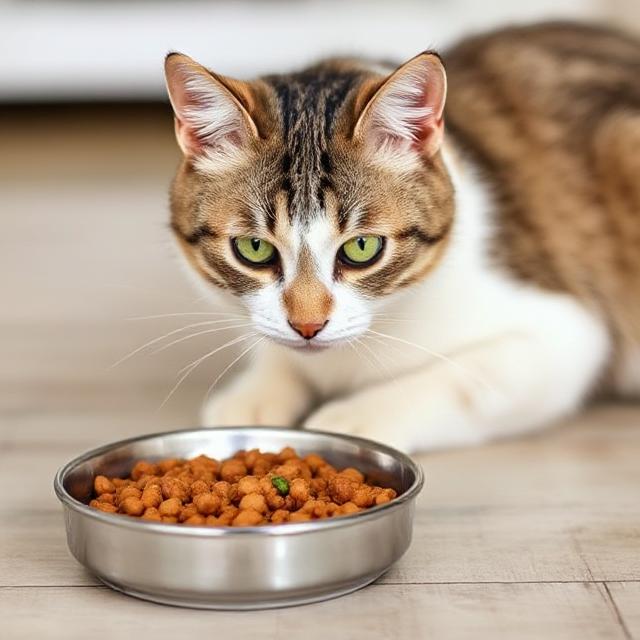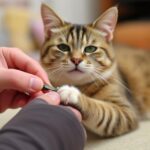How To Make Homemade Cat Food Balanced Diet
🐾 How To Make Homemade Cat Food Balanced Diet: A Complete Guide for Healthy Cats
How to make homemade cat food balanced diet. Cats are not just pets—they’re family. And as cat parents, we all want to give them the best nutrition possible. While commercial cat foods are convenient, many cat owners are turning toward homemade cat food to ensure their furry companions get a balanced and natural diet.
If you’re wondering how to make homemade cat food balanced diet, this guide will walk you through everything—from understanding cat nutrition to creating balanced recipes right in your kitchen.
🧠 Why Homemade Cat Food?
Homemade cat food allows you to: How to make homemade cat food balanced diet
-
Control ingredients: You know exactly what’s going into your cat’s meal.
-
Avoid fillers and additives found in many commercial foods.
-
Customize nutrition for your cat’s age, weight, and health needs.
-
Improve taste and freshness, especially for picky eaters.
However, homemade cat food isn’t just about cooking chicken and rice. Cats are obligate carnivores, meaning they require specific nutrients that only come from animal-based sources. To keep your cat healthy, you must make sure their meals are balanced and complete.
🐱 Understanding a Cat’s Nutritional Needs
Before you start cooking, it’s essential to understand what nutrients your cat needs in their daily diet. How to make homemade cat food balanced diet
1. Protein
Cats need a high amount of animal protein to thrive. Good sources include:
-
Chicken
-
Turkey
-
Beef
-
Fish (salmon, sardines, tuna – occasionally)
-
Rabbit or lamb
Protein supports muscle health, tissue repair, and energy.
2. Fats
Fats provide energy and help with vitamin absorption. Healthy fat sources include:
-
Chicken fat
-
Fish oil (for omega-3 fatty acids)
-
Olive oil (in small amounts)
3. Amino Acids (Especially Taurine)
Taurine is vital for cats—it supports vision, heart health, and reproduction. Cats can’t make enough of it naturally, so their food must contain it. Taurine is found in: How to make homemade cat food balanced diet
-
Dark meat (chicken thighs, hearts, liver)
-
Fish
4. Vitamins and Minerals
Essential vitamins and minerals include:
-
Vitamin A (from liver)
-
Vitamin D (from fish oil)
-
Calcium (for bones)
-
Phosphorus (for energy)
-
Zinc, Iron, and Magnesium
Balancing calcium and phosphorus is especially important. Too much phosphorus or too little calcium can cause bone problems.
5. Water
Cats often don’t drink enough water, especially if they’re used to dry kibble. Homemade cat food should contain moisture, either through broth or natural juices from meat. How to make homemade cat food balanced diet
🍗 How To Make Homemade Cat Food Balanced Diet: Step-by-Step
Let’s go through how to make a nutritious and balanced homemade cat food recipe safely. How to make homemade cat food balanced diet
🥩 Step 1: Choose the Base Protein
Start with fresh, high-quality meat. Always buy from trusted sources and avoid processed meats.
Example proteins:
-
Chicken thighs (boneless, skinless)
-
Turkey breast
-
Lean beef
-
Salmon or mackerel (boneless, cooked)
🥦 Step 2: Add Organ Meats
Organs provide key nutrients missing from muscle meat alone. How to make homemade cat food balanced diet
Recommended organs:
-
Chicken liver (rich in Vitamin A)
-
Heart (rich in taurine)
-
Kidneys (contain essential minerals)
Keep organ meats to 10–15% of the total recipe.
🍳 Step 3: Include Healthy Fats
Add a teaspoon of fish oil or olive oil per meal for healthy skin and a shiny coat.
🥚 Step 4: Add Supplements
Even with natural ingredients, cats still need a few supplements to make their diet complete: How to make homemade cat food balanced diet
-
Taurine powder – 500–1000 mg per day
-
Calcium – from eggshell powder or bone meal (about ½ teaspoon per pound of meat)
-
Vitamin E – antioxidant support
-
Vitamin B-complex – overall metabolic health
How to make homemade cat food balanced diet. You can find cat-safe supplements at pet stores or online. Always consult your vet before adding any.
🥣 Step 5: Mix and Cook Properly
Some cat owners serve raw food (with proper safety), but cooking lightly can reduce the risk of bacteria.
Cooking Tips:
-
Boil or bake meat gently—avoid overcooking.
-
Never add salt, garlic, onions, or seasonings.
-
Mix cooked meat, organs, and supplements in a food processor for an even texture.
-
Add a little warm water or broth for moisture.
🧊 Step 6: Portion and Store
Once mixed:
-
Divide into daily portions (based on your cat’s weight).
-
Store in airtight containers.
-
Keep in the refrigerator for up to 3 days or freeze for up to 2 weeks.
🥘 Sample Homemade Cat Food Recipe (Balanced)
Here’s a simple recipe to try: How to make homemade cat food balanced diet
Ingredients:
-
1 lb chicken thighs (boneless)
-
100 g chicken liver
-
1 egg yolk
-
½ teaspoon crushed eggshell powder (for calcium)
-
1 teaspoon fish oil
-
500 mg taurine supplement
-
1 cup water or unsalted chicken broth
Instructions:
-
Boil or bake chicken and liver until cooked through.
-
Let cool, then chop into small pieces.
-
Add egg yolk, eggshell powder, and fish oil.
-
Mix all ingredients thoroughly.
-
Blend or mash to your cat’s preferred texture.
-
Store in containers and refrigerate or freeze.
Serving Tip: Feed 2–3 small meals a day depending on your cat’s weight and activity level. How to make homemade cat food balanced diet
⚠️ Common Mistakes To Avoid
-
Skipping supplements: Even if ingredients are fresh, missing nutrients like taurine or calcium can cause serious health issues.
-
Using only muscle meat: Cats need organs and bones (or calcium powder) for balance.
-
Adding human food seasonings: Salt, garlic, onions, and spices are toxic to cats.
-
Ignoring portion size: Overfeeding can lead to obesity; underfeeding causes malnutrition.
-
Not consulting a vet: Always check with your veterinarian before switching to homemade food.
🧩 Balancing Raw vs Cooked Diets
Some cat owners prefer raw feeding, believing it mimics a cat’s natural diet. While raw diets can be healthy if done right, they carry risks of bacterial contamination (like Salmonella or E. coli). If you choose raw, handle ingredients carefully and freeze them before serving. How to make homemade cat food balanced diet
Lightly cooking meat can reduce these risks while preserving nutrients—making it a safer option for most cat parents.
🩺 The Role of Veterinary Guidance
Creating a homemade cat diet is rewarding, but it requires professional input. Your vet can:
-
Analyze your recipe for balance.
-
Recommend specific supplements.
-
Adjust the diet for kittens, seniors, or cats with health issues (like kidney disease or diabetes).
You can also consult a veterinary nutritionist for a custom meal plan. How to make homemade cat food balanced diet
🌿 Benefits of a Balanced Homemade Cat Diet
When done right, a homemade diet can: How to make homemade cat food balanced diet
-
Improve coat shine and reduce shedding
-
Enhance energy and playfulness
-
Reduce allergies or sensitivities
-
Promote better digestion
-
Strengthen the immune system
Plus, cats often love the taste of fresh, real food!
🧾 Final Thoughts
Making homemade cat food can be one of the best decisions you make for your feline friend—but only if it’s balanced and complete. Understanding their unique nutritional needs and following the right recipe ensures your cat gets everything they require to stay healthy and happy. How to make homemade cat food balanced diet
Always start small, monitor your cat’s health and behavior, and adjust as needed with your vet’s advice. With a little care and attention, you’ll be able to serve nutritious, delicious meals that your cat will love for years to come. How to make homemade cat food balanced diet

